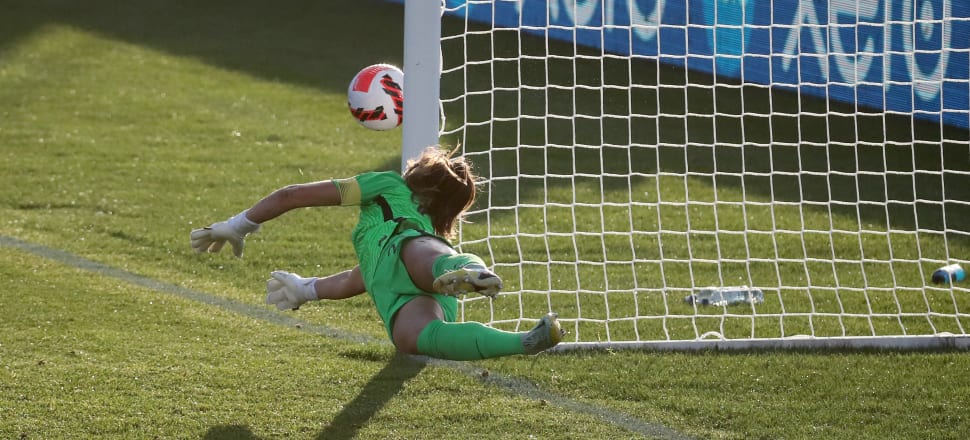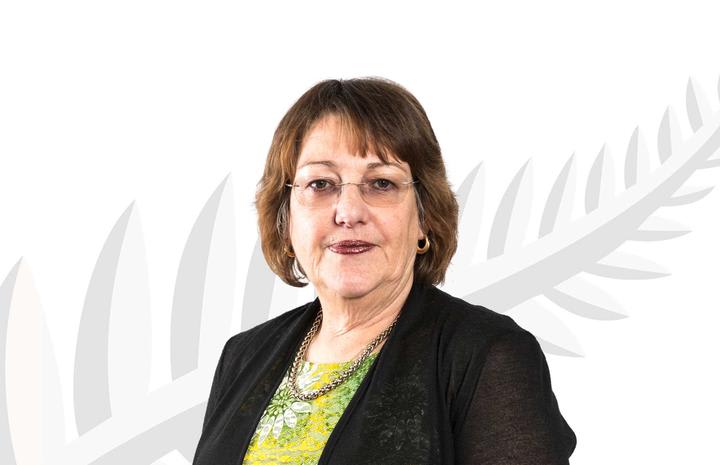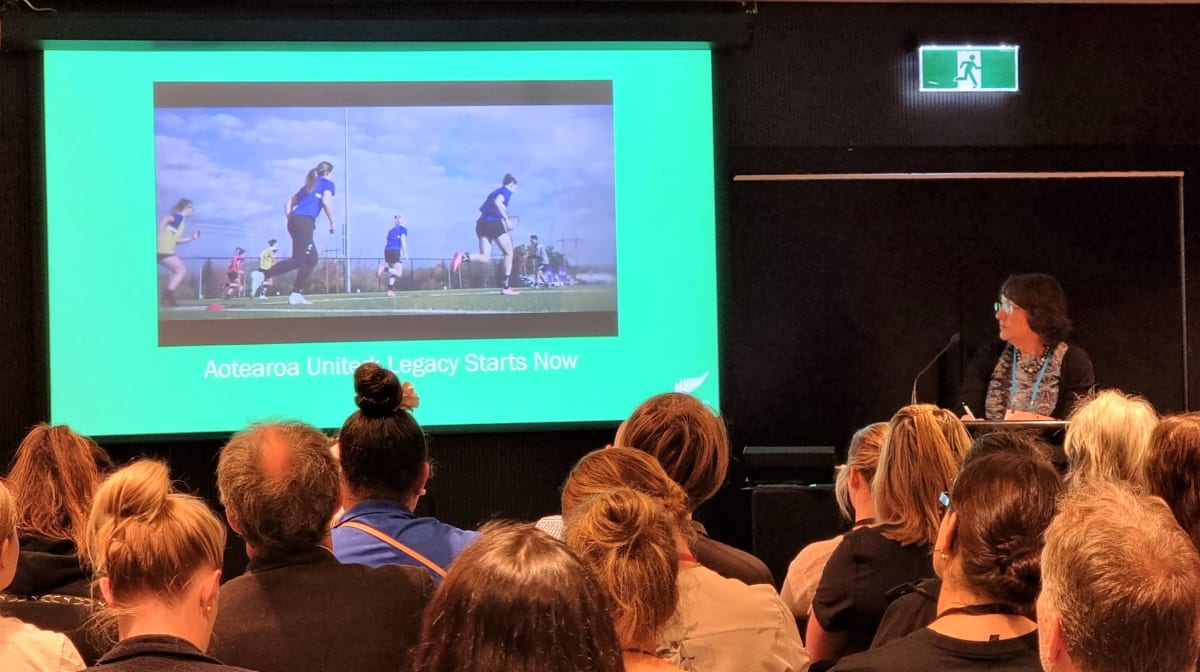
The crowds watching the Football Ferns play at home for the first time in four years are a smidgeon of what's to come at next year's FIFA Women's World Cup, says NZ Football's Johanna Wood - ready to better the Rugby World Cup's success.
Just before the Football Ferns' 1-1 draw in a friendly with South Korea in Christchurch last night, Johanna Wood was – like most other Kiwis this week - reflecting on the Black Ferns’ success in the Rugby World Cup.
The tournament’s record-breaking crowds and TV audiences (1.2 million Kiwis watched Saturday night’s final free-to-air on Three) has got Wood, the president of New Zealand Football, fired up for what lies ahead – next year’s FIFA Women’s World Cup being played here and in Australia.
“I just think it’s another challenge for us,” Wood says. “Rugby have set the bar high, and we need to match that and exceed it. Prior to the Rugby World Cup, the largest sporting female event in New Zealand was the 2008 FIFA U17 women’s tournament.”
That was a crowd of 16,162 for the final between North Korea and the US at North Harbour Stadium. You’ll remember last Saturday’s RWC final between the Black Ferns and England drew over 42,500 fans at Eden Park – the stadium where the Football Ferns open the World Cup on July 20 against Norway.
“So we’ve been there before, we need to be there again," Woods says. "But I don’t think Kiwis realise how big this tournament will be. It’s huge, it’s very huge.”
Wood has been in Auckland this week speaking at the IWG World Women and Sport conference – dubbed the “fourth women’s World Cup” behind the cricket and rugby tournaments now played and the football event yet to come.

She says it’s FIFA’s goal to have 1.5 million fans in the stands at the tournament played across Australasia, kicking off next July. The Rugby World Cup clocked up just over 150,000 fans over five weeks – another record for the tournament.
“The Black Ferns had 3500 in Christchurch for their test against Australia [in August] and we had 5000 for the first match against South Korea last Saturday,” Wood says.
“We’re starting from a similar base to create interest. It would be fair to say some of the Black Ferns had a higher profile already but we also have a number of [Football] Ferns now who have a high profile in their professional clubs.
“So it’s about getting the players and the wider squad to connect with the communities they’re going into before the tournament.”
After their 1-0 loss to South Korea on Saturday, it was a smaller crowd in a cold and windy Christchurch last night for a midweek game, but the faithful fans were rewarded with a drama-filled clash.
A stunning left-footed smash from Olivia Chance opened the scoring for the Football Ferns in the 13th minute, and the Football Ferns defence held strong until Park Yee-un equalised with a sneaky deflection in the 57th minute.
The stand-out player of the match, though, was Football Ferns captain and goalkeeper Victoria Esson, who moments after giving away a penalty inside the box not long before fulltime, brilliantly saved Son Hwa-yeon’s attempt with a dive to her right (on top of other excellent saves during the game).
Some of Vic Esson's superb saves in the Football Ferns 1-1 draw with South Korea
This series has been the first time in four-and-a-half years the Football Ferns, ranked 22nd in the world, have played at home – not ideal in the lead-up to a world tournament.
But Wood says the side will have nine home games next year – starting with the world champions, the United States, in January, then Portugal in February, and a series of invitational games while the first-ever World Cup play-off tournament takes place in Hamilton and Auckland.
Wood realises the importance of building up the profiles of the Football Ferns so more Kiwis follow their fortunes and support their games.
“New Zealand’s most-capped footballer is Ria Percival [160 games] - it’s not an All White,” Wood says. “We need to tell our players’ stories better.
“We’ve seen a huge increase in the team’s social media connections, over the last couple of years.”
“Part of it is getting out to our communities, going to schools and talking to kids. And that’s happened in Christchurch in the past week. We had probably just as many young boys as young girls at the players’ meet and greet.”
The Football Ferns were right behind the Black Ferns during their World Cup campaign, she says.
“The camaraderie between the two national squads is great,” Wood says. “They send messages of support to each other. One of the [Football] Ferns shared with me she’s had an injury that one of the Black Ferns had, so that Black Fern reached out and they’ve been in contact. I don’t think you get that in the men’s code.”
Football Ferns meet young fans in Christchurch on the weekend.
Being the last in line of the women’s World Cups, Woods has held some concern that New Zealanders might be “worn out” by the multiple major sporting events from a volunteer perspective. “Because we ask a lot of our volunteers and we need heaps of them,” she says.
“I know here in Auckland, they’ve got a volunteer base they use and the people don’t care what the code is, they’re just keen to be involved. That’s really cool.
“I think that’ll be one of the impacts of this World Cup - we will build capacity in football world events that people from across the Pacific and Australia will be able to be part of, like a men’s World Cup, or a women’s under 17 tournament, so we’re building the capacity of that workforce for the world.”
Legacy is a crucial part of any world event like this and, Woods explained at a workshop at the IWG Women and Sport conference yesterday, multiple levels of legacy have already begun for this FIFA Women’s World Cup.
It’s FIFA’s goal to have 60 million females playing football around the globe by 2026 – which will be helped by interest in this World Cup.
New Zealand Football’s legacy plan, Aotearoa United: Legacy Starts Now, is already being put into place. There’s a focus on developing pathways in the game, including a women’s leadership programme now in its third term, and opportunities for young women to play professional football.

The Phoenix Women, New Zealand’s first professional women’s team, are about to begin their second season in Australia’s A-League Women, with their first ever home game at Wellington’s Sky Stadium on Sunday.
The Wellington Phoenix feel confident they’ll set a new record at that game for the largest regular season A-League Women’s crowd, aiming for 10,000 fans. The record stands at 5159.
The New Zealand government has invested around $19 million to upgrade 30 of the 32 potential sporting facilities earmarked for the tournament, including pitch and lighting enhancements, and gender-neutral changing spaces. That not only benefits players at the tournament, but makes girls and young women feel safe to play club football.
The Oceania Football Confederation (OFC) its own legacy plans to raise the visibility of women in sport in the Pacific region – encouraging more girls to play football while at the same time educating them and their families about health and wellbeing.
Michael Armstrong, who’s head of social responsibility at OFC, says they are using key events like the Women’s World Cup to help with their long-term goal to integrate social development into the football development pathway. So, getting more girls playing football, while teaching them the importance of handwashing, and drinking clean water.
“We work with our communities to understand their needs and see how we can use the football ecosystem and infrastructure to address those needs,” he says. “People don’t understand the problems with access to clean drinking water in the Pacific. Sixty percent of women have been affected by gender-based violence.
“Our training for coaches includes integrating awareness around safeguarding and violence.
And at youth training we give them the messages to take home and teach their families.
“You will be a better footballer if you’re also a healthy footballer who doesn’t get infected by diseases and has good oral hygiene.”
Then there’s what New Zealand and the host cities want from the tournament, like tourism, and the legacy for clubs, players, coaches and fans.
“When you win the right to host the event, that’s when the legacy starts,” Woods says. “We can’t do everything, so we have to let people who sit in these different parts of the game run with their legacy.”
* The IWG World Women and Sport Conference continues in Auckland, a hybrid event with 1200 people attending in person, and 500 on-line, continues over the next two days.






